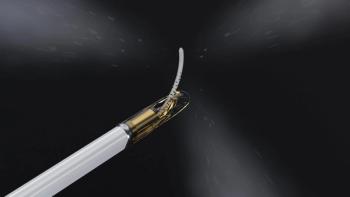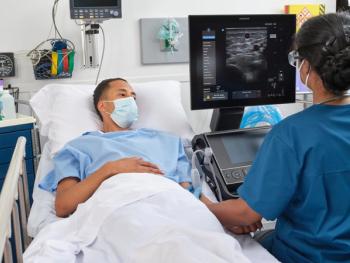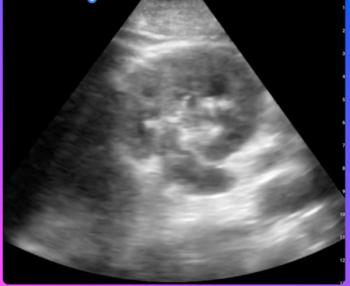
Strain imaging identifies benign breast masses without biopsy
Ultrasound strain imaging, or elastography, can show the difference between a benign breast mass and a tumor, avoiding biopsy. Although accuracy depends on the skill of the reader, strain imaging can be used to better determine which masses should be biopsied.
Ultrasound strain imaging, or elastography, can show the difference between a benign breast mass and a tumor, avoiding biopsy. Although accuracy depends on the skill of the reader, strain imaging can be used to better determine which masses should be biopsied.
Strain imaging uses compression from probe pressure to show the elastic properties of tissues. Most tumors show up as hard masses with little compression, while benign masses show with more normal compression.
Dr. Elizabeth Burnside and colleagues at the University of Wisconsin, Mayo Clinic, and Charing Cross Hospital in London conducted a study to determine if radiologists could use strain imaging to identify accurately which masses were benign and which needed to be biopsied. They presented their results at the 2007 American Institute of Ultrasound in Medicine meeting.
The researchers performed strain imaging on 403 breast masses, then chose 50 of the highest quality images of malignant tumors and 48 of the highest quality images of benign lesions. These images were then given to three radiologists blinded to pathologic outcomes.
The readers first examined B-mode images and described them using BI-RADS descriptors, providing their opinion on the probability of malignancy. Then they examined the corresponding strain images and updated the probability of malignancy.
Readers' assessments showed a statistically significant improvement in gauging probability of malignancy with the use of strain imaging. Specificity and sensitivity improved as well. Performance did vary between readers, however, with the most accurate readers also being able to assess strain image quality.
A prospective study investigating the use of strain imaging for identifying breast lesions was conducted by Dr. Dawn Regner at the Mayo Clinic and colleagues and presented at the 2006 RSNA meeting. Their results also showed improved identification of breast lesions but found that procedures may need some modifications for use in a busy clinical practice.
Newsletter
Stay at the forefront of radiology with the Diagnostic Imaging newsletter, delivering the latest news, clinical insights, and imaging advancements for today’s radiologists.




